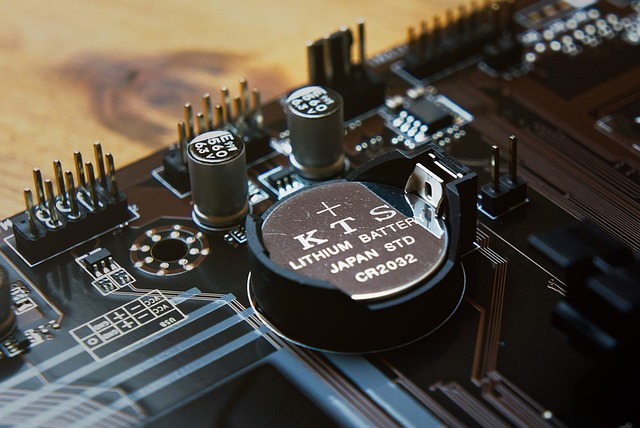When your device's battery starts showing signs of suboptimal performance—such as reduced charging longevity, prolonged charging times without increased capacity, and rapid discharge after being charged—it's a clear indication that it may be time to replace the battery. Other red flags include visible swelling or bulging, which poses safety risks due to irreversible damage. Regularly assessing and proactively replacing the battery not only ensures optimal device performance but also significantly reduces potential hazards associated with compromised battery health. As batteries age, they naturally lose capacity, requiring more frequent recharges and longer charging times. Coupled with increased instances of unexpected shutdowns or restarts due to insufficient voltage maintenance, these symptoms are indicative of a battery that needs to be replaced. To maintain device efficiency and prevent data loss, it's advisable to follow manufacturers' recommendations for routine battery replacement. Additionally, monitoring for the memory effect—a condition where the battery incorrectly recalls a higher charge level—is crucial. Calibrating your battery by fully depleting and recharging it can sometimes reset its memory, but if this doesn't improve performance, or if the battery consistently underperforms, a new battery is essential for safety, efficiency, and longevity of your device. Lastly, watch out for consistent electrical instabilities like frequent voltage drops and surges, which can accelerate battery degradation. Addressing these issues promptly with a battery replacement can prevent significant problems, ensuring your device remains efficient and functional over time. Replacing the battery is often the best solution when facing persistent performance issues or recurring signs of battery health deterioration.
When your electronic device starts displaying unusual behavior, it may be more than just a minor glitch. It could be signaling that your battery needs a replacement. This article outlines three clear indicators to watch for and delves into the nuances of how a degrading battery can impact your device’s performance. We’ll explore the memory effect, charging anomalies, and the risks posed by voltage drops and power surges, providing valuable insights on maintaining optimal battery health. Understanding these aspects is crucial for the longevity and efficiency of your device, so you can replace the battery at the right time and avoid potential malfunctions.
- Recognizing the Red Flags: 3 Clear Indicators It's Time to Replace Your Battery
- Declining Performance: Understanding How a Faulty Battery Affects Device Functionality
- The Memory Effect Explained: How Reduced Memory Capacity Signals Battery Replacement Needs
- Charging Anomalies: Identifying Irregularities in Your Battery's Charging Patterns
- Voltage Drops and Power Surges: The Impact of Electrical Instability on Battery Health
Recognizing the Red Flags: 3 Clear Indicators It's Time to Replace Your Battery

When your device begins to exhibit certain behaviors, it may be a clear sign that your battery is nearing the end of its service life and requires replacement. One of the most definitive indicators is a significant decline in battery performance. This can manifest as a shorter battery life than usual, where your device may not last through a day on a single charge, even with typical usage patterns. Another red flag is an increase in charging time without a corresponding increase in usable battery capacity. If it takes noticeably longer for your battery to reach a full charge, or if the battery drains rapidly after being plugged in, these are strong signals that the battery’s ability to hold and release energy efficiently is compromised. Lastly, persistent battery swelling or bulging is an unmistakable visual cue that the battery has encountered irreparable damage and must be replaced. This physical degradation can pose a risk of leakage or even explosion, making immediate action necessary. If you notice any of these signs, it’s advisable to replace your battery promptly to maintain the safety and functionality of your device. Regular monitoring and timely replacement can prevent data loss and ensure your devices operate at peak performance.
Declining Performance: Understanding How a Faulty Battery Affects Device Functionality

When a battery begins to age, its performance inevitably declines, which can manifest in various ways that affect your device’s functionality. One of the most noticeable signs is a reduction in the battery’s capacity to hold a charge. A once dependable battery may struggle to power your device throughout the day, requiring frequent recharging. This inconsistency in performance can be disruptive, especially for devices like smartphones that are integral to daily communication and tasks. Another indicative factor is the increased time it takes for your device to reach a full charge. If you notice that your gadget’s charging process has become sluggish, where it previously charged quickly, this could signal that the battery’s efficiency is waning. Over time, a faulty battery may also lead to performance issues beyond power management, such as unexpected shutdowns or restarting without warning. These glitches occur because the battery can no longer provide the stable voltage required for optimal operation. When faced with these symptoms, it becomes clear that a battery replacement is necessary to restore your device’s functionality and ensure it operates at its best. Regularly replacing your battery, as recommended by the manufacturer or when you detect a decline in performance, will prevent more serious issues from arising and maintain the longevity of your device.
The Memory Effect Explained: How Reduced Memory Capacity Signals Battery Replacement Needs

When a battery exhibits the memory effect, it’s an indication that its ability to hold a charge is waning and replacement may be imminent. The memory effect in batteries, particularly lithium-ion ones, occurs when the battery falsely remembers a charge level that is higher than its actual capacity due to repeated partial chargings and dischargings. This phenomenon can lead to reduced memory capacity within the battery, causing it to recall a larger charge than is actually stored. Over time, this can result in the battery consistently delivering less power than required by devices, signaling the need for a replace battery. It’s crucial for users to monitor their batteries’ performance and pay attention to any inconsistencies between the stored memory and the actual energy output. Regularly calibrating your device, which involves fully discharging and then charging the battery, can help to reset the battery’s memory and improve its accuracy. However, if this process no longer restores full functionality or if the battery consistently holds less charge than it used to, it may be time for a new battery. Replacing a battery with memory effects not only prolongs the life of your device but also ensures optimal performance and safety, as degraded batteries can pose risks such as overheating or failure to function under load.
Charging Anomalies: Identifying Irregularities in Your Battery's Charging Patterns

When your device’s battery performance begins to wane, it may exhibit distinct charging anomalies that indicate it’s nearing the end of its service life. One of the most noticeable signs is when your battery takes significantly longer to charge than usual. If you recall your battery once held a charge that could last you through the day, but now requires hours to reach even half capacity, this is a red flag. It’s also worth monitoring if your device experiences irregularities in charging, such as halting the charging process prematurely or not holding a charge as long as it used to. These inconsistencies can be a clear indication that it might be time to replace the battery.
Another aspect to consider is the health of your battery when it’s plugged in. A fully functioning battery should reach close to 100% within a predictable time frame and maintain its charge effectively while in use. If you observe that the battery percentage increments slow down or stall around the 80% mark, or if the battery drains faster than it can recharge, these are clear indicators of degradation. Such patterns are often irreversible and suggest that a replacement battery would restore optimal performance to your device. Regularly checking for these charging anomalies can help you proactively address battery issues before they become severe, ensuring that your device remains reliable and efficient.
Voltage Drops and Power Surges: The Impact of Electrical Instability on Battery Health

When your device experiences frequent voltage drops or unexpected power surges, it’s often an indication that your battery may be on its way to needing replacement. Electrical instability within a device can significantly affect battery health and performance over time. Voltage fluctuations disrupt the normal charging and discharging processes, leading to uneven wear on the battery cells. This inconsistent voltage can cause the battery’s capacity to degrade more rapidly than usual. Power surges, in particular, can be especially detrimental as they introduce abrupt changes in electrical current that can physically stress the battery components, potentially causing internal damage and reducing its lifespan. It’s crucial to monitor these issues, as addressing them promptly can prevent further deterioration and ensure your device functions optimally. If you notice such occurrences frequently, it may be time to consider replacing your battery, as continuing to use the device under these conditions could lead to a complete failure of the battery. Regular maintenance and ensuring that your device has proper protection against voltage spikes can help mitigate these risks, but when such electrical instability becomes a persistent issue, replacing the battery is often the most effective solution to restore device functionality and longevity.
When a battery begins to falter, it’s crucial to recognize the signs early to prevent more significant issues. This article has outlined three definitive indicators that your battery may be on its way out and in need of replacement. From declining performance to charging anomalies, understanding these subtle cues can save you from unexpected device failures. Pay close attention to voltage drops and power surges, as they are clear signals of electrical instability affecting battery health. Remember, proactive maintenance can extend your device’s lifespan, and knowing when to replace your battery is key to preserving its efficiency. Address these issues promptly to maintain optimal performance and ensure that your devices remain reliable companions in your tech journey.
